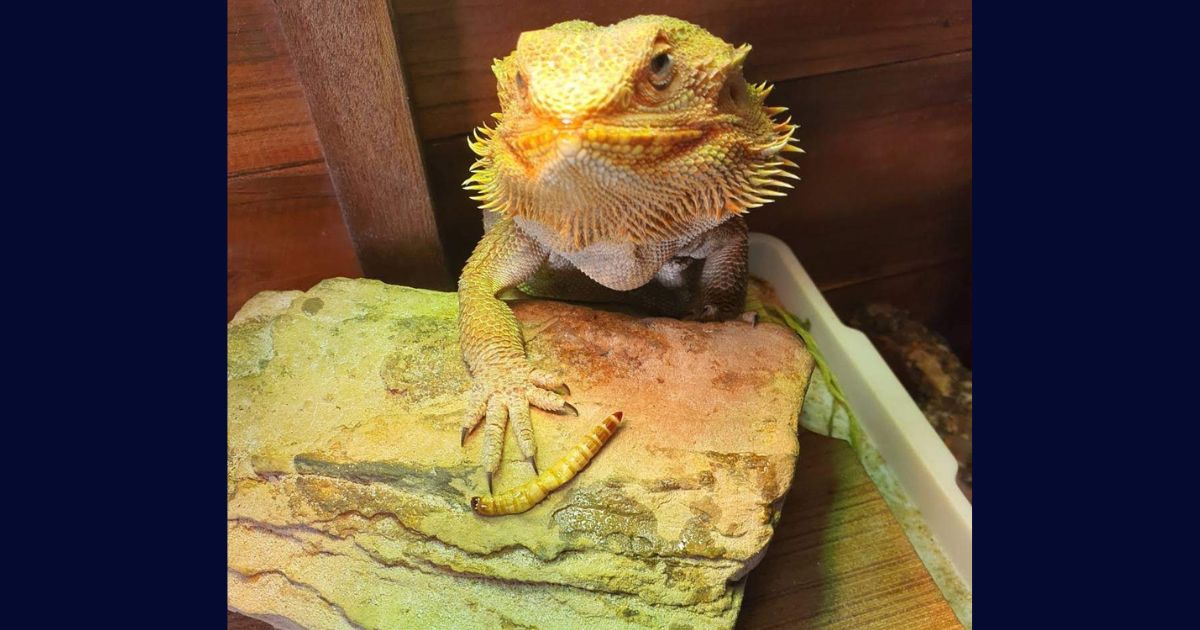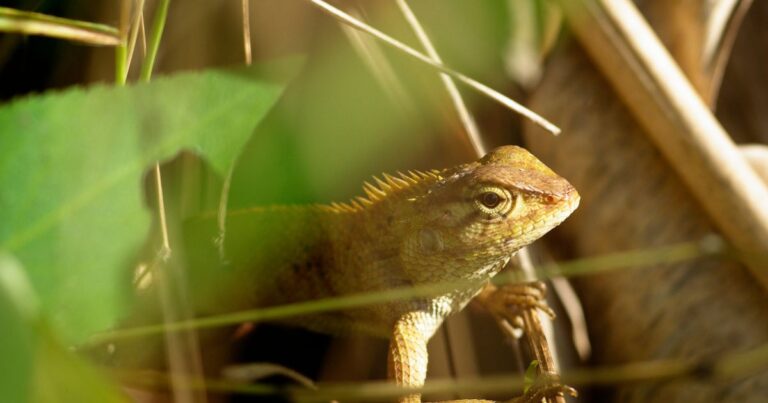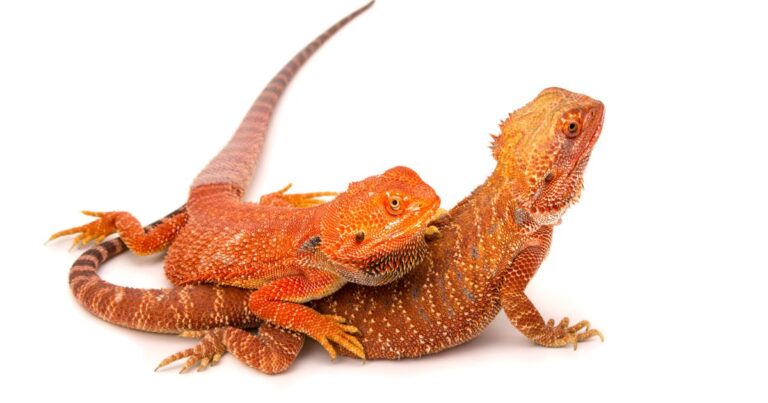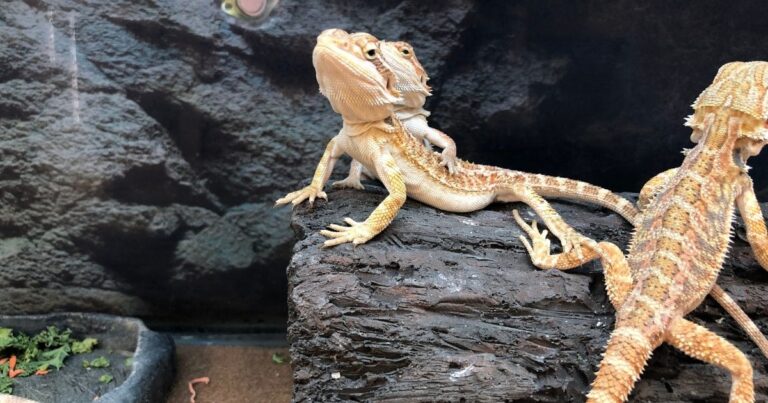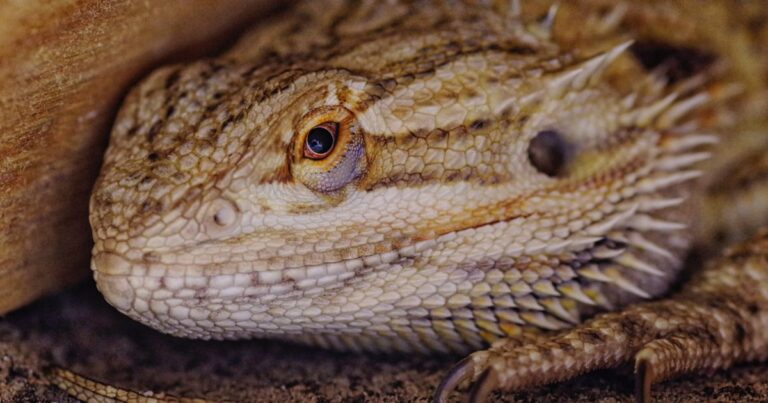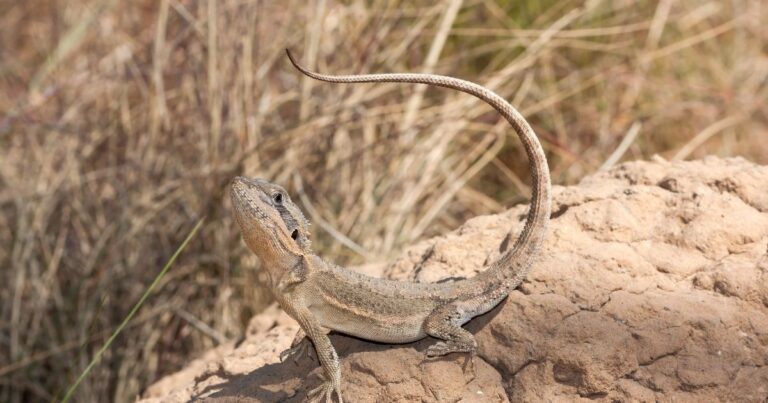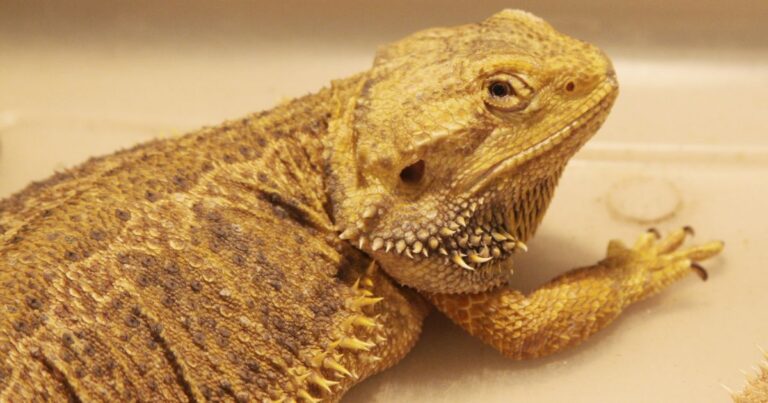Safe and Toxic Foods for Bearded Dragons
Table of Contents
Today, we’re diving into the world of safe and toxic foods for bearded dragons. Ever wondered what makes a mealworm munch-worthy or why broccoli is better than bell peppers? Stick around as we explore the do’s and don’ts of dragon dining!
Safe and Toxic Foods for Bearded Dragons
| Safe Foods | Toxic Foods |
|---|---|
| Collard Greens | Avocado |
| Bell Peppers | Rhubarb |
| Squash | Lettuce |
| Apples | Spinach |
| Pears | Citrus Fruits |
| Berries | Onions |
| Crickets | Fireflies |
| Mealworms | Boxelder Bugs |
| Roaches | Wild-caught Insects |
| Carrots (in moderation) | Chocolate |
| Bananas (in moderation) | Dairy Products |
Introduction
Hey there, fellow dragon lovers! Today, I want to talk about something super important for our scaly friends – their diet! When it comes to our bearded dragons, knowing what’s safe and what’s toxic for them to eat is crucial. So, let’s dive into the world of bearded dragon nutrition and explore the safe and toxic foods for bearded dragons.
Feeding our bearded dragons a balanced diet of safe foods is one of the best ways we can keep them healthy and happy.
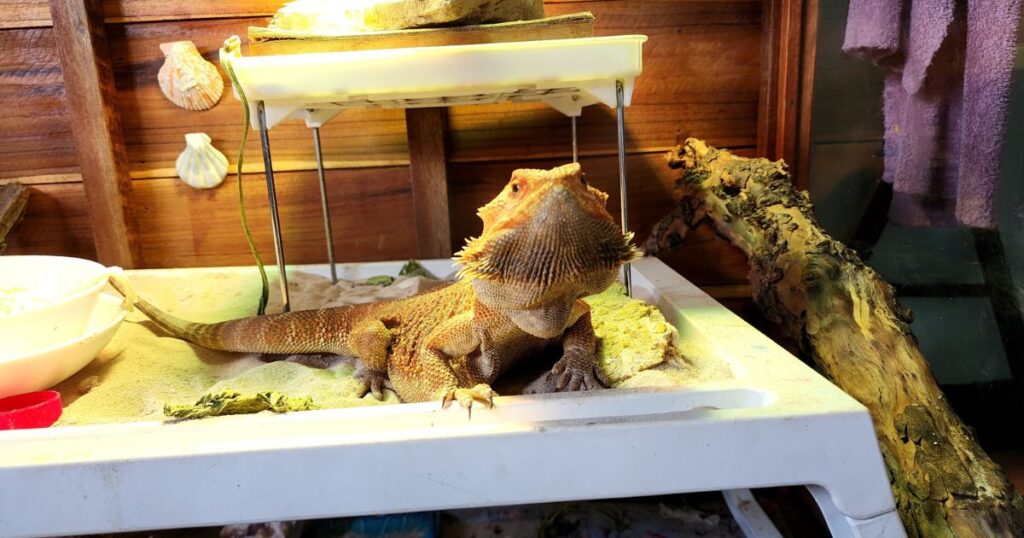
The Importance of a Balanced Diet for Bearded Dragons
Top 5 Safe Insects for Bearded Dragons
- Crickets
- Dubia Roaches
- Mealworms
- Waxworms
- Silkworms
Just like us, bearded dragons need a balanced diet to stay healthy and happy. But what does a balanced diet for a bearded dragon look like? Well, it’s a mix of protein from insects, a variety of vegetables, and a little bit of fruit. But it’s not just about what they eat, it’s also about how much and how often they eat. And remember, what’s good for one bearded dragon might not be good for another. Each dragon is unique, just like us!
When I first got Gilbert, I was so excited! I mean, who wouldn’t be? He was this tiny, adorable creature with so much personality. But I quickly realized that taking care of a bearded dragon was more than just playtime and cuddles. One of the first things I had to learn was what to feed him. I remember spending hours researching and even making a list of safe and toxic foods for bearded dragons. It was a lot of work, but seeing Gilbert thrive made it all worth it!
Feeding your bearded dragon a balanced diet is not just about keeping them full. It’s about providing them with the nutrients they need for strong bones, healthy skin, and a well-functioning body. A well-fed dragon is a happy dragon, and a happy dragon makes for a happy dragon parent!
Understanding the Bearded Dragon’s Diet
Did you know that bearded dragons are omnivores? That means they eat both plants and meat – or in their case, insects! In the wild, bearded dragons eat a variety of insects, plants, and even small animals. But in captivity, we have to carefully plan their diet to make sure they’re getting all the nutrients they need.
Bearded dragons love their bugs, but they also need their greens. And while they enjoy a sweet treat now and then, fruits should only make up a small part of their diet. It’s all about balance and variety. But remember, not all foods are safe for bearded dragons. Some can be toxic and harmful to their health.
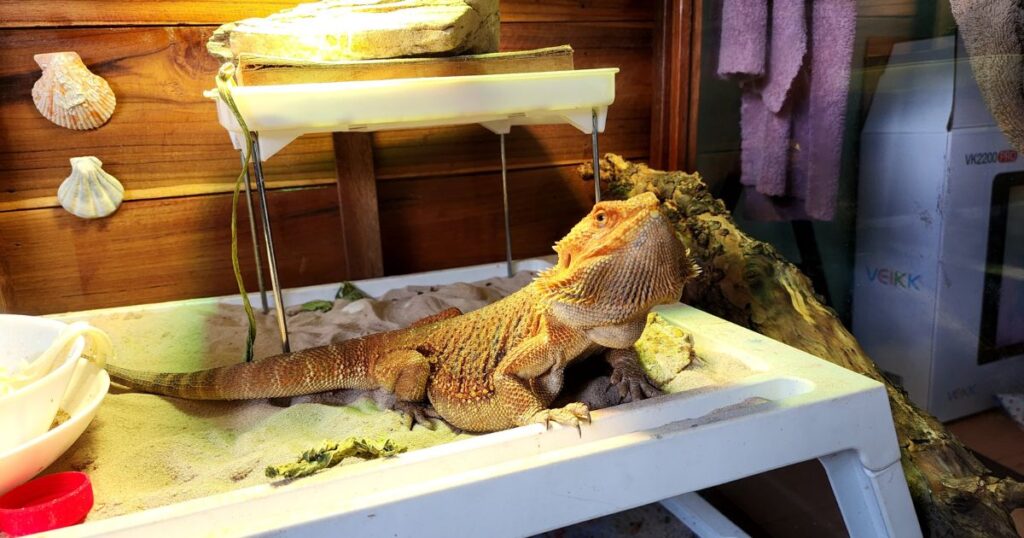
Safe Foods for Bearded Dragons
Now, let’s dive into the yummy stuff – the safe foods we can feed our bearded dragons. When it comes to insects, bearded dragons can eat a variety of bugs including crickets, mealworms, and roaches. But remember, it’s important to gut-load these insects before feeding them to your dragon. Gut-loading is when you feed the insects a nutritious diet before they become food for your dragon. This way, your dragon gets all the nutrients from the bugs’ last meal!
| Safe Insects for Bearded Dragons | Safe Vegetables for Bearded Dragons | Safe Fruits for Bearded Dragons |
|---|---|---|
| Crickets | Collard Greens | Apples |
| Mealworms | Squash | Berries |
| Roaches | Bell Peppers | Bananas |
Vegetables are super important for bearded dragons, providing them with essential vitamins and minerals. Some safe vegetables for bearded dragons include collard greens, squash, and bell peppers. And when it comes to fruits, think of them as treats. Bearded dragons love fruits like apples, berries, and bananas, but remember, fruits should only make up a small part of their diet.
One of the most surprising things I discovered was that not all fruits and vegetables are safe for bearded dragons. I mean, who knew that avocados and rhubarb could be toxic to them? And did you know that spinach and beet tops can interfere with calcium absorption? I sure didn’t! It was a real eye-opener and made me realize how important it is to do your research.
Toxic Foods for Bearded Dragons
Just as there are foods that are good for bearded dragons, there are also foods that can harm them. Some foods are toxic to bearded dragons and can cause serious health problems. For example, avocados and rhubarb are toxic to bearded dragons and should never be included in their diet. Other foods, like lettuce and spinach, aren’t necessarily toxic, but they’re not good for bearded dragons either. Lettuce is mostly water and doesn’t provide much nutrition, and spinach can interfere with the absorption of calcium, an essential nutrient for bearded dragons.
| Toxic Foods for Bearded Dragons | Reason |
|---|---|
| Avocados | Toxic |
| Rhubarb | Toxic |
| Lettuce | Low Nutritional Value |
| Spinach | Interferes with Calcium Absorption |
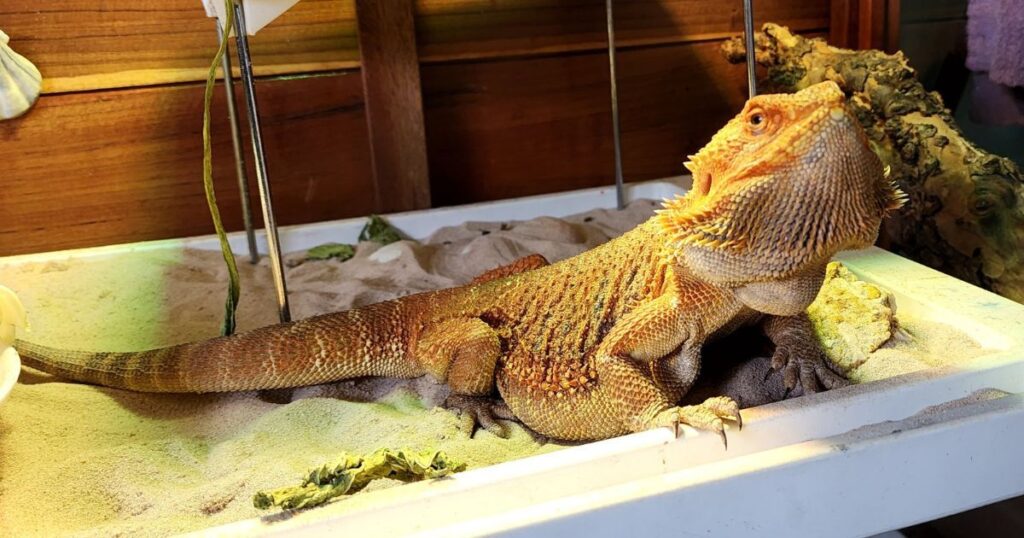
Remember, when in doubt, always check if a food is safe before giving it to your dragon. And if your dragon accidentally eats something toxic, contact your vet immediately.
Feeding Different Age Groups
Depending on their age, bearded dragons have different dietary needs. Hatchlings and juveniles need more protein because they’re growing, so they should be fed more insects. Adults, on the other hand, need more vegetables and less protein.
As Gilbert grew, I noticed that his dietary needs changed. When he was a hatchling, he was all about the insects. I mean, he could eat them all day! But as he grew older, I noticed that he started to show more interest in vegetables. I had to adjust his diet to include more greens and less protein. It was a bit of a challenge at first, but with time, I got the hang of it. And Gilbert? He’s just as happy and healthy as ever!
Hatchlings
Hatchlings are like little eating machines – they need a lot of food to support their rapid growth! At this stage, about 70% of their diet should be protein from insects. But don’t forget the veggies! Even at this young age, it’s important to introduce them to vegetables.
Juveniles
As bearded dragons grow into their juvenile stage, their diet starts to change a bit. They still need a good amount of protein, but vegetables should make up a larger portion of their diet. At this stage, a 50/50 split between insects and vegetables is a good rule of thumb.
Adults
Once bearded dragons reach adulthood, their diet needs another adjustment. Adults need less protein and more vegetables. About 70% of their diet should be vegetables, with the remaining 30% being protein from insects.
Just like us, bearded dragons need a balanced diet to stay healthy and happy. But remember, what’s healthy for us might not be healthy for them!
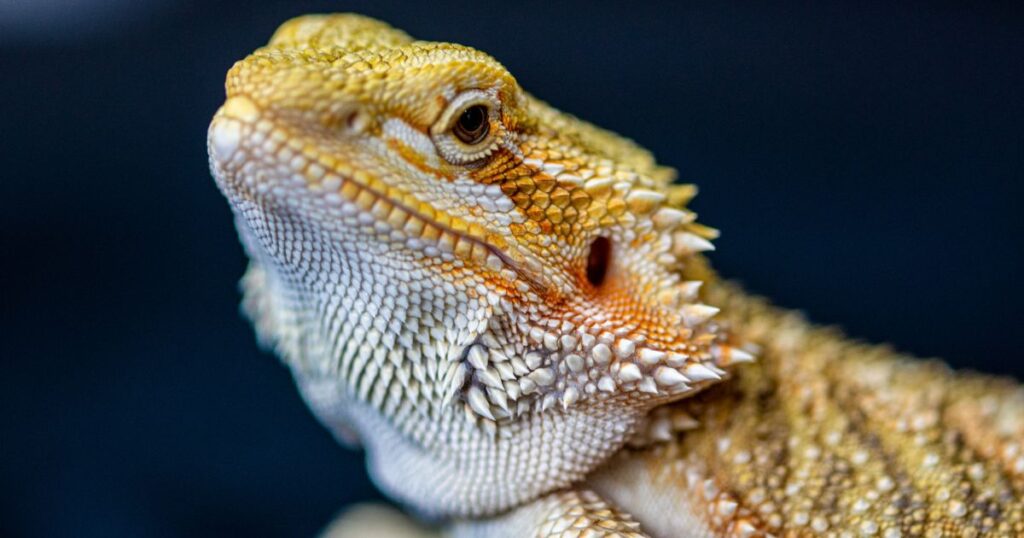
Conclusion
Feeding our bearded dragons a balanced diet of safe foods is one of the best ways we can keep them healthy and happy. It’s not always easy, but it’s definitely worth it. After all, a healthy dragon is a happy dragon, and there’s nothing better than seeing your dragon thrive!
Call to Action
If you want to learn more about bearded dragon care, check out the Bearded Dragon Care category. And don’t forget to check out my index page on Bearded Dragon Diet. Happy dragon parenting!
For those of you who are curious about other aspects of bearded dragon diet, you might find our previous posts Gut-loading insects for optimal nutrition and Seasonal variations in bearded dragon diet interesting.
Disclaimer: This article is intended for informational purposes only. It is not meant to substitute for medical advice or diagnosis provided by your veterinarian. Do not use this information for diagnosing or treating your pet. Always consult your own veterinarian for a diagnosis for any health problem you think may affect your pet.
